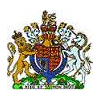Speed Limit Sign Authority
- Read more about Speed Limit Sign Authority
- Log in to post comments
 Colt Chamberlain was convicted in traffic court for driving at a speed of 145 km/h in a posted 90 km/h zone on highway 19 in Delta. He appealed the conviction saying that the Crown had not proven who had put up the speed limit sign. Only the minister responsible for the administration of the Transportation Act has the authority to do this.
Colt Chamberlain was convicted in traffic court for driving at a speed of 145 km/h in a posted 90 km/h zone on highway 19 in Delta. He appealed the conviction saying that the Crown had not proven who had put up the speed limit sign. Only the minister responsible for the administration of the Transportation Act has the authority to do this.


 Some sections of rural highways in British Columbia saw an increase in the posted speed limit in 2014 following a provincial government review which included a poll of the population. Within two years some of these increases were rolled back due to rising collision rates. Today
Some sections of rural highways in British Columbia saw an increase in the posted speed limit in 2014 following a provincial government review which included a poll of the population. Within two years some of these increases were rolled back due to rising collision rates. Today  Many drivers believe speeding alone does not actually cause crashes. While not totally inaccurate, this over-simplified phrase does not paint the whole picture. The fact is, very few crashes are caused by one factor alone, and this includes speeding, but downplaying the impact of speeding can prove to be deadly.
Many drivers believe speeding alone does not actually cause crashes. While not totally inaccurate, this over-simplified phrase does not paint the whole picture. The fact is, very few crashes are caused by one factor alone, and this includes speeding, but downplaying the impact of speeding can prove to be deadly. In a survey dated August 13, 2018 conducted by ResearchCo asked "Do you approve or disapprove of using the following kinds of speed enforcement in British Columbia?"
In a survey dated August 13, 2018 conducted by ResearchCo asked "Do you approve or disapprove of using the following kinds of speed enforcement in British Columbia?" Question: In the winter, how do police determine what is a safe speed? I was driving Highway 5 in a storm and didn't really want to do 45 km/h with a 2 km line of traffic in the left lane. I passed the train of cars, but only did about 70 km/h. I felt that it was safe for myself in the truck that I was driving.
Question: In the winter, how do police determine what is a safe speed? I was driving Highway 5 in a storm and didn't really want to do 45 km/h with a 2 km line of traffic in the left lane. I passed the train of cars, but only did about 70 km/h. I felt that it was safe for myself in the truck that I was driving.
 This is a video produced by the Belgian Federal Highway Police in collaboration with the Parents of Child Highway Victims. It is in French with English sub-titles. It features conversations between drivers caught speeding and the parents of children who died in collisions. Both are seated in the rear of a vehicle immediately after the driver had been stopped by police.
This is a video produced by the Belgian Federal Highway Police in collaboration with the Parents of Child Highway Victims. It is in French with English sub-titles. It features conversations between drivers caught speeding and the parents of children who died in collisions. Both are seated in the rear of a vehicle immediately after the driver had been stopped by police.  Hi, I am a concerned citizen and home owner that lives on Blind Bay Road in the South Shuswap.
Hi, I am a concerned citizen and home owner that lives on Blind Bay Road in the South Shuswap.